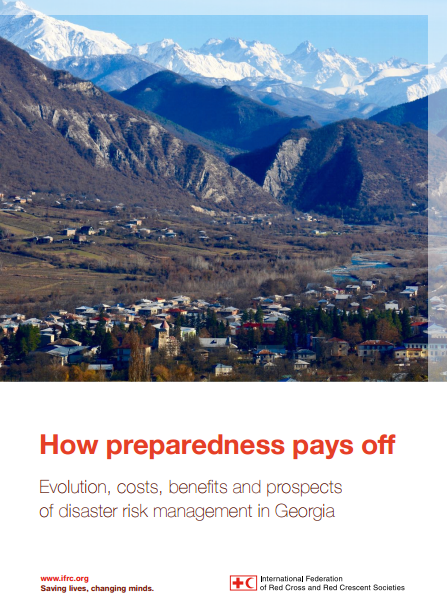How Preparedness Pays Off: Evolution, costs, benefits and prospects of disaster risk management in Georgia

This report summarizes a cost benefit analysis study in Georgia in November-December 2015. Inside you will find highlights the cost effectiveness of the Georgia Red Cross Society’s work on disaster risk reduction and building community resilience. The GRCS program was launched in 2010 and has paid off extremely well, the three surveyed areas the identified benefit-cost ratios range between USD 12.51 and USD 54.54. The study identifies avoided hazard losses as the main benefit and analyses the various channels that lead to loss avoidance. It also notes significant organisational and governance co-benefits. The Georgia CBA results further strengthen the Red Cross/Red Crescent evidence from other CBA reports showing DRR programs are cost effective. The average benefit cost ratio of the 11 CBAs conducted by the IFRC so far is USD 16.55. Excellent read. Bravo, Georgia Red Cross Society!
